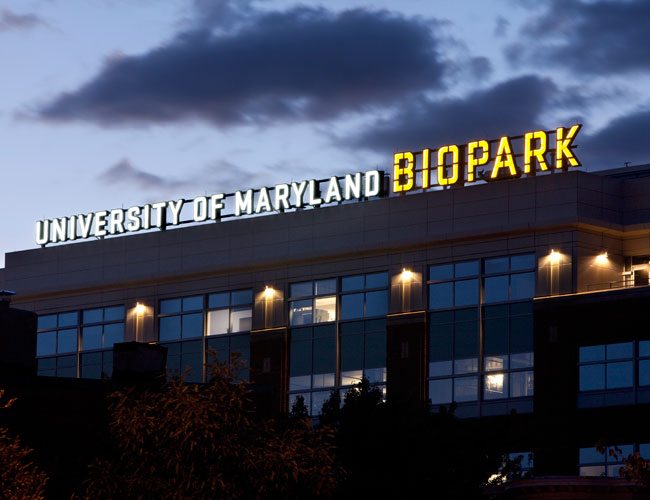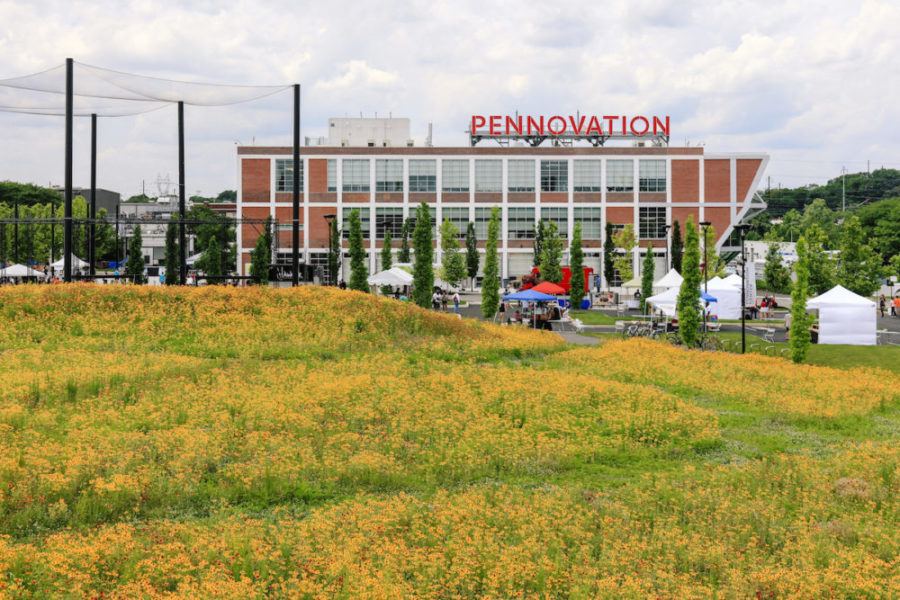University of Pennsylvania and Philadelphia’s University City. John Hopkins University and much of Baltimore city. The dichotomy and interdependence between a city and neighborhood that a university resides can often be summed up by the expression “town and gown” — there are the residents, and then there’s the academic population, and the two are distinct.
John Hopkins is Baltimore’s biggest employer. A 2019 list put its university and health system as the top-two biggest employers with 27,300 employees and 23,470 employees, respectively. Put that together, and over 50,000 jobs fall under the John Hopkins umbrella. And in Philadelphia, Penn, Thomas Jefferson University and their health systems are the city’s biggest employers with 41,676 and 30,500, respectively.
Yet it’s not only in direct employment where universities have economic impact. As they support the commercialization of technology being created by faculty and galvanize entrepreneurship among students, universities are playing a role in new business creation. Look at Southwest Baltimore’s University of Maryland BioPark and Southwest Philly’s Pennovation Center and you’ll find companies that formed in areas where the respective universities have expertise. At Johns Hopkins’ FastForward U in Baltimore’s Remington, George Washington University’s Innovation and Entrepreneurship Lab in D.C. or the Prince George’s County Innovation Hub in Largo, Maryland, there’s space for students and others from the university community to build companies.
These spaces are created with the intention to promote entrepreneurship and businesses that creates jobs and boosts the economy. The tricky part is once the goose lays the golden egg, how do institutions keep entrepreneurs from flying West to Silicon Valley for greener pastures? The solution is likely this: Make your own pastures green.
“We drive public policy in our cities,” said Jane Shabb, director of the BioPark and associate VP of economic development, about the leadership role universities can have in economic development. “Between [John Hopkins] campus and our campus, we are Baltimore.”
Innovation leaders from each of these institutions gathered virtually at September’s Introduced by Technical.ly conference to discuss how universities are economic drivers — and what more can they do to improve the lives of those in their cities who don’t pay tuition.

University of Maryland BioPark. (Courtesy photo)
The conversation, moderated by Technical.ly Assistant Editor Stephen Babcock, can be summed up this way: Universities have great power in the local economy, and with that comes great responsibility in the ways they are aiding the communities around them.
“We have a huge reach in terms of all the people who might be seeking employment in a given area,” said Kerrie Carden, director of student ventures at John Hopkins’ startup development program FastForward U, about universities. “That symbiosis I think is not only natural but also needs to be intentional.”
Great insights about the tension between town and gown from @kerriecarden pic.twitter.com/sRxb6PJukF
— Technical.ly Philly (@TechnicallyPHL) September 25, 2020
The saying goes that a rising tide raises all ships. There’s something to the philosophy that a vibrant city makes a vibrant university and vice versa. It matters that a university is intentional about the waves it makes in where campus development takes place, who it’s hiring and what communities it supports.
“Talent is everywhere but opportunity is not,” said Mark Lawrence, project manager of Prince George’s Innovation Hub and founder of Inncuvate Consulting, which works closely with community colleges in the DMV region. “If we want to ‘on ramp’ more people into the innovation and entrepreneurial economy we have to figure out what we do as community colleges.”
Penn sees its startup incubators Pennovation Works and Pennovation Labs as a way of creating an ecosystem that keeps fresh jobs and businesses in Philadelphia.
“There was a time in Philly that even if entrepreneurs wanted to stay in Philadelphia, they couldn’t stay there,” because of a lack of resources, said Anish Kumar, managing director of Pennovation Works.
GW is revitalizing a business corridor and pushing to create its own innovation district to retain its high production of unicorn startups in the DMV area. And the University of Maryland has embedded itself in the west side of Baltimore with its BioPark and built a pipeline from degree-to-work in the same neighborhood.
“Making sure that our entrepreneurs and innovators have what they need” is GW’s main goal, said Jim Chung, the university’s associate VP for research innovation and entrepreneurship. Fulfilling those needs and getting entrepreneurs to stay close “helps the region, helps GW, helps students, helps our faculty do better research and education.”
John Hopkins sees itself as managing its huge stake in Baltimore with programs such as FastForward U, which serves as a hub for innovation and entrepreneurship and interacts directly with the community association in East Baltimore where the building is located. There’s an effort to try and avoid “siloing” in communities immediately surrounding these institutions that result in gentrification, displacement and lack of investment (or perceived lack of investment).
“It’s like turning a barge around,” said Carden about the navigating the relationships between universities and the communities around them. “It’s not a simple answer, but it is one that requires a lot of dedication, and I see that happening.”
Donte Kirby is a 2020-2022 corps member for Report for America, an initiative of The Groundtruth Project that pairs young journalists with local newsrooms. This position is supported by the Robert W. Deutsch Foundation.Before you go...
Please consider supporting Technical.ly to keep our independent journalism strong. Unlike most business-focused media outlets, we don’t have a paywall. Instead, we count on your personal and organizational support.
Join our growing Slack community
Join 5,000 tech professionals and entrepreneurs in our community Slack today!





